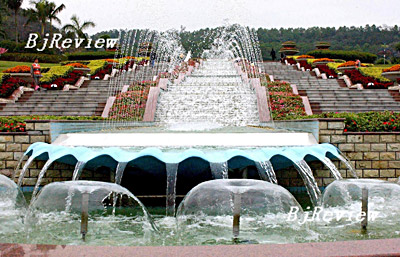
The latest statistics from the State Environmental Protection Administration of China (SEPA) indicate that the index for the discharge of sulfur dioxide and chemical oxygen demand (COD), the two major pollutants, in Guangdong Province have been reduced by 2.1 percent and 0.9 percent in 2006 compared with those in 2005.
This information was revealed on Monday by Li Qing, director of the Guangdong Provincial Environmental Protection Bureau, and showed the province has achieved its goal for 2006. The achievement was made in sharp contrast to the nation's performance that failed to reach its goal set in early 2006 to save energy and reduce pollution discharge.
Li attributed the progress to the works his bureau had done in previous years. As early as in 2003, the provincial government and SEPA jointly worked out an environmental protection plan for the Pearl River Delta and the province as well. The project harnessing the Pearl River started in 2002 as well as many sewage treatment plants and desulphurization projects of power generation plants.
These efforts have laid down an important foundation to bring down the amount of pollutants discharged in the province last year, Li said.
"The task (to save energy and reduce pollution discharge) in the coming years will be really enormous," Li said.
He pointed out that since the province boasts large economic strength and a rapid growth, plus its way of growth has not been changed fundamentally, it is very difficult for the province to reach the goal of reducing SO2 and COD by 15 percent during the 11th Five-Year Plan (2001-10) period.
In addition to air quality, the province also needs to strengthen the protection against water pollution in the mountainous regions and eastern and western parts of the province.
Li said the province would strictly control the discharge of pollutants from its origins and speed up the construction of sewage treatment plants and desulphurization projects to reduce the total amount of pollutant discharge.
"To provide strong technical support to the control of pollution discharge, Guangdong will choose 1,000 state key pollution sources and sewage treatment plants and power generation plants and set up an automatic monitoring system," Li said.
According to the plan, the new environmental monitoring and control center, upon its completion, will become a leading command center in China. It will cover five regions of Guangzhou, Shantou, Shenzhen, Maoming and Shaoguan in the province.
According to Li, Guangdong will invest 2.3 billion yuan (US$295 million) in building an environmental supervision pre-alarming system during the 2006-10 period.
Chen Shanru, director of Guangdong Development and Reform Commission, said on Monday that the province's per 10,000 yuan (US$1,282) gross domestic product (GDP) energy consumption in 2005 was 65.8 percent of the nation's average. And the amount was further reduced in 2006.
"It is exceptionally difficult for the province to achieve such a progress when its GDP reached 2,500 billion yuan (US$321 billion), or a growth of 14.1 percent, last year," said Chen.
He also said that as a next step, the province was planning to expand the proportion of its tertiary industry. After years of industrial restructuring efforts, local GDP generated by the tertiary industry accounted for 42 percent. Compared to the second industry, tertiary industry consumes 20 percent of less energy than the second industry under the same condition.
Therefore, the increase in the proportion of tertiary industry will greatly reduce the energy consumption, Chen said.
(China Daily March 9, 2007)
| 